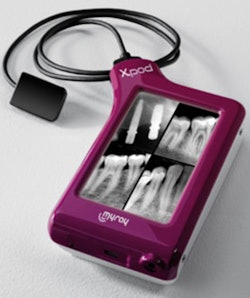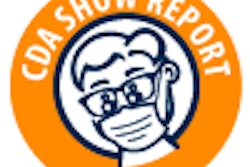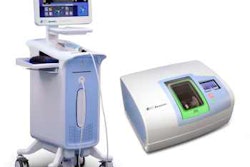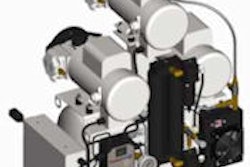
NEW YORK - Maybe it's the holiday spirit, the great weather (at least on Sunday), or media reports that we are witnessing the beginning of the end of the recession. Either way, this year's Greater New York Dental Meeting is definitely more upbeat -- and crowded -- than in 2008.
There are also more new product introductions here this year than last, with a definite trend toward smaller, more mobile devices and applications.
One of the coolest product introductions at the California Dental Association meeting in September was the PracticeWorks Pearl, a software application for the BlackBerry and iPhone that allows dental professionals to manage their offices and patient needs remotely. (DrBicuspid.com will be launching its own mobile access application in the next few weeks; for a sneak preview, type m.drbicuspid.com into your iPhone, BlackBerry, Windows Mobile, or other handheld device.)
Now OralCDx is going mobile as well, with an iPhone app geared toward making oral cancer information more readily available to doctors and patients. In addition to providing education materials on oral cancer, the application enables users to take an iPhone picture of any suspicious lesions and send it to the company's lab for review. In conjunction with announcing the iPhone app at the Greater New York meeting, the company is offering a special show promotion featuring an iPhone as the prize.
 |
| MyRay's Xpod. Image courtesy of MyRay. |
Practice metrics
Another trend at this year's meeting is online tools to enhance patient outreach and practice metrics. Smile Reminder introduced several additions to its online Xtend platform, including social networking capabilities that give users easy access to Twitter and Facebook; mapping capabilities to organize patient databases geographically; vSling video capabilities for capturing, managing, and distributing patient testimonials on the Web; and analytics that can give users insights into the financial performance of their practice via daily and monthly production numbers.
And Dentra, a newcomer to the Greater New York meeting, was touting two new services: Patient Satisfaction (PatSat), an online patient feedback and reporting service that the company says helps dentists increase patient retention and referrals; and PracticeView, an online suite of reports that helps dentist refine and track practice goals by measuring practice production, business growth, and quality of care. Both pull information from a client's practice management system to provide them with ongoing access to individualized reports containing self-comparisons and industry benchmarks.
"At Dentra, we believe comparative information drives the delivery of extraordinary patient care," said Amanda Twiss, president and CEO of Dentra, in a press release. "Our latest solutions empower dental professionals to confirm quality, enhance patient experience, and engage their teams in measurable practice goals without adding any additional burden."
Diagnostic devices
Oral cancer also has a higher profile this year, a trend that is expected to increase in 2010 with a number of targeted educational efforts.
Trimira was featuring the Identafi 3000 ultra, the newest version of its oral cancer detection device. The Identafi 3000 ultra features brighter lighting via customized LEDs, nickel plating to boost electrical conductivity, enhanced software features, and a more ergonomically friendly design, according to the company. Trimira is also offering a clinical training CD featuring a training video, an extensive PowerPoint presentation of common oral lesions, and additional educational and clinical reference materials.
And on the caries-detection front, another fluorescence imaging device was introduced at Greater New York: the SoproLife from Acteon. According to company literature, using blue LED light, SoproLife captures and displays an anatomical view of the tooth using native fluorescence. In diagnosis-aid mode, the reflected light is green when the dentine is healthy and red when it is infected. In treatment-aid mode, the wavelength of the light is altered to amplify the infected dentine. By decreasing the blue light and increasing the red, the infected dentine fluoresces a darker red, making it more clearly visible to the dentist, according to the company. In addition, the images can be enlarged 30- to 100-fold to further enhance the diagnostic capabilities.
The SoproLife is not yet available in the U.S. or Canada, pending regulatory approval.



















